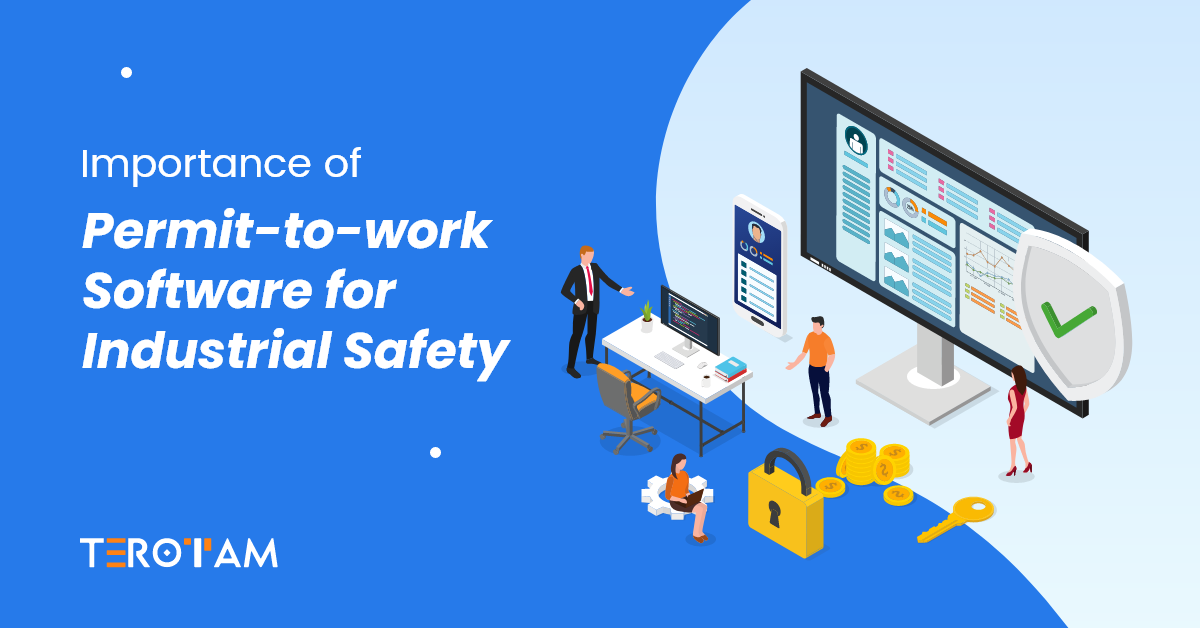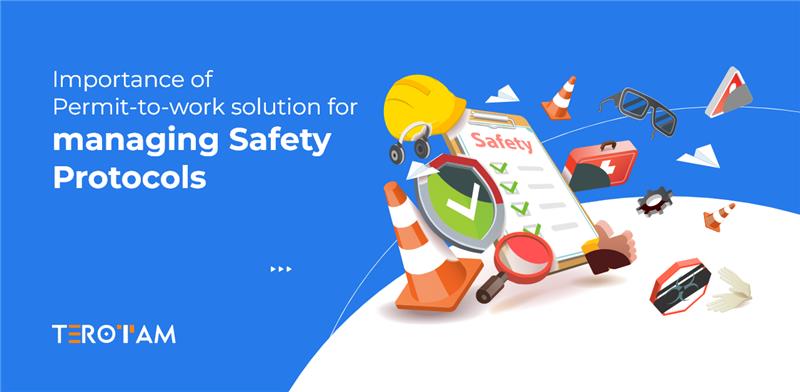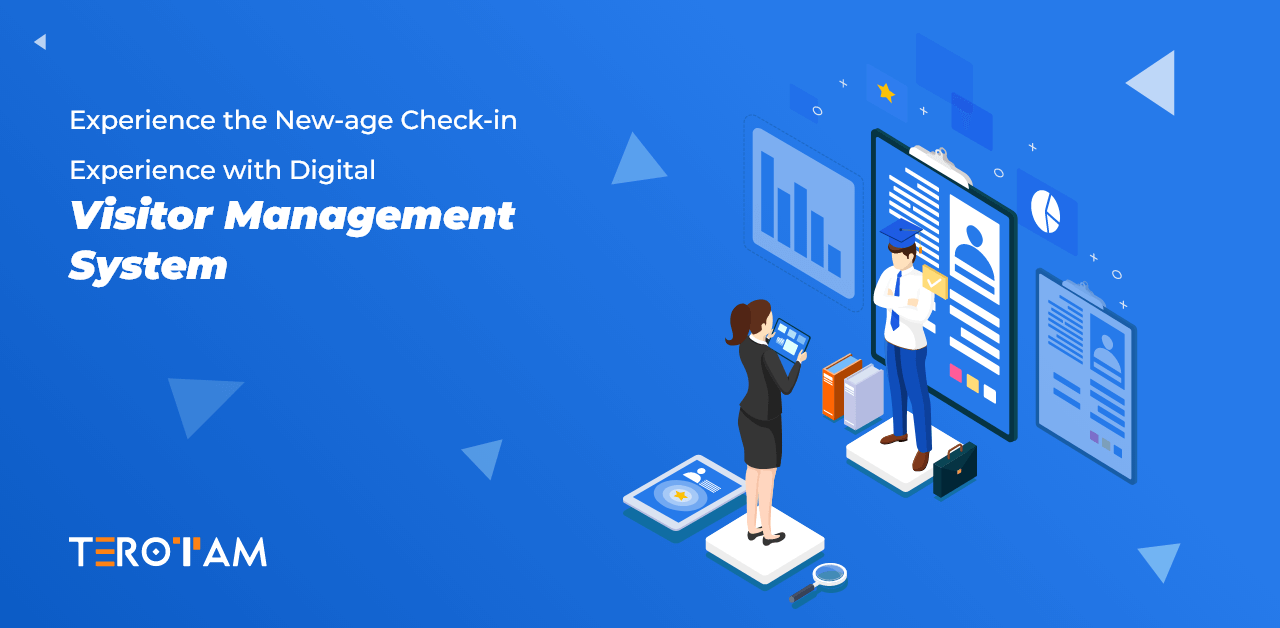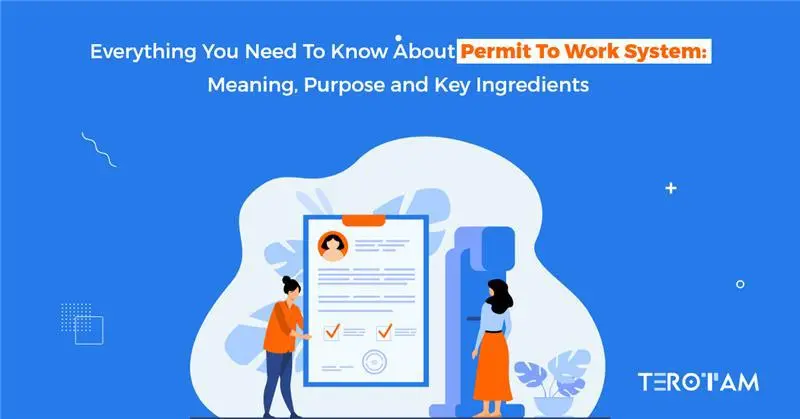Industrial safety is an unavoidable concern in any workplace environment. According to the International Labour Organization (ILO), approximately 2.78 million fatal accidents occur annually in workplaces worldwide. These figures underscore the pressing need for robust safety protocols to mitigate risks and ensure the well-being of workers.
In this context, Permit-to-Work (PTW) systems emerge as indispensable tools for fostering a culture of safety and compliance within industrial settings.
This article discusses the importance of the Permit-to-work system for ensuring industrial safety and how it manages work permits.
Why Is a Permit-to-Work System a Must for Industrial Safety?
Industrial environments are inherently fraught with risks, ranging from mechanical hazards to chemical exposures and everything in between. In such settings, where the slightest oversight can lead to catastrophic consequences, a robust safety management system is not just desirable—it’s essential.
The Permit-to-Work (PTW) system emerges as a cornerstone of industrial safety, providing a structured framework to mitigate risks, ensure compliance, and foster a culture of safety consciousness.
Here’s a detailed look at why PTW systems are indispensable for industrial safety:
1. Risk Assessment and Control:
Permit-to-work systems mandate a comprehensive risk assessment process before commencing any high-risk activity. This entails identifying potential hazards, evaluating their severity and likelihood, and implementing control measures to mitigate risks effectively. By systematically assessing risks and implementing appropriate controls, Permit-to-work systems minimize the likelihood of accidents, injuries, and occupational illnesses.
2. Standardization and Compliance:
Industrial operations are subject to several regulations, standards, and best practices governing safety and occupational health. Permit-to-work systems provide a standardized approach to safety management, ensuring compliance with local regulations, industry standards, and organizational policies. By complying with these standards, organizations not only fulfill their legal obligations but also create a culture of accountability and responsibility toward safety compliance.
3. Clear Communication and Accountability:
PTW systems facilitate clear communication and delineation of responsibilities among stakeholders involved in high-risk activities. Each permit specifies the tasks to be performed, the associated hazards, and the safety measures to be implemented, leaving no room for ambiguity. By explicitly assigning roles and responsibilities, PTW systems foster accountability among workers, supervisors, and management, ensuring that safety protocols are adhered to diligently.
4. Prevention of Accidents and Incidents:
Prevention is always preferable to cure, particularly in high-risk industrial environments where accidents can have far-reaching consequences. Permit-to-Work systems serve as proactive tools for identifying and addressing potential hazards before they escalate into accidents or incidents. Through stringent controls and safety checks, PTW systems act as early warning systems, flagging deviations from safety protocols and prompting corrective action to prevent accidents proactively.
5. Continuous Improvement and Learning:
Industrial safety is a dynamic field that evolves in response to technological advancements, organizational insights, and lessons learned from past incidents. Permit-to-Work systems embody the ethos of continuous improvement by facilitating feedback mechanisms, incident analysis, and lessons learned. By capturing insights from near misses, safety audits, and reviews, organizations can refine their safety protocols iteratively, fostering a culture of learning, adaptation, and innovation in safety management.
What Does Permit-to-work System Include?
The Permit-to-Work (PTW) system serves as a comprehensive tool for managing work permits while ensuring adherence to safety regulations. Here’s how the PTW system effectively manages work permits in alignment with safety regulations:
1. Dynamic Permit Description and Access Permissions:
PTW systems provide a dynamic permit description outlining the work to be performed and the level of access permissions granted to authorized personnel. This includes specifying the location and work area for which the permit is issued, minimizing confusion and ensuring clarity regarding the scope of work.
2. Identification of Site Representative or Concerned Person:
The PTW system identifies the site representative or the concerned person available at the access-given area to engage with. This ensures seamless communication and coordination between personnel performing the work and site management, facilitating quick resolution of any issues or concerns.
3. Introduction of Teammates and Assigned Tasks:
PTW systems introduce teammates who are working on the same allocated task or within the designated work area. By providing visibility into team composition and assigned tasks, the system promotes collaboration and accountability among team members.
4. Purpose and Procedure Clarification for Employees:
The PTW system describes the entire purpose and procedure that employees need to follow for the assigned task. This includes step-by-step instructions, safety protocols, and any specific procedures or precautions to be observed during task execution.
5. Risk Awareness and Precautions:
PTW systems ensure that employees are aware of all risks and hazards present on the work site, along with the precautions necessary to avoid accidents. This includes providing detailed risk assessments, hazard identification, and mitigation measures within the permit documentation.
6. Clarification of Other Permit Requirements:
PTW systems clarify any other types of permits required to carry out the assigned work without interruptions. This may include permits for hot work, confined space entry, electrical work, or any other high-risk activities necessitating additional safety precautions.
7. Authorization and Approval to Start Work:
The PTW system authorizes the crew or staff to enter the work premise or engage in the task with a work permit pass. This authorization is granted only after thorough review and approval of the permit documentation, ensuring compliance with safety regulations before work commencement.
8. Checklist and Review Sheet for Work Summary:
PTW systems include a checklist and review sheet summarizing the work to be performed. This ensures that all necessary steps and precautions are followed before, during, and after task execution, promoting consistency and quality assurance.
9. Timeline Specification for Work Completion:
PTW systems specify the timeline within which the work is to be completed, allowing for efficient tracking of working hours and resource allocation. This helps prevent delays and ensures timely completion of tasks while maintaining productivity and safety standards.
10. Additional Notes, Closure Procedure, and Reporting Patterns:
The PTW system allows for the inclusion of additional notes, work closure procedures, and respective reporting patterns within the permit documentation. This ensures that all relevant information is documented and communicated effectively, facilitating smooth transitions between work shifts and enabling comprehensive reporting for regulatory compliance purposes.
How Does Permit-to-work System Works and Manage Work Permits?
The Permit-to-Work (PTW) system effectively manages work permits within safety regulations:
- Dynamic Description and Access Permissions: Clearly defines work scope and access levels to minimize confusion.
- Identification of Site Representative: Assigns a point of contact for seamless communication and issue resolution.
- Introduction of Teammates and Tasks: Identifies team members and their responsibilities, fostering collaboration and accountability.
- Clarification of Purpose and Procedures: Provides detailed instructions and safety protocols for task execution, ensuring clarity and adherence to standards.
- Risk Awareness and Precautions: Highlights potential hazards and specifies necessary precautions to mitigate risks effectively.
- Clarification of Other Permit Requirements: Specifies additional permits needed for specific tasks to ensure comprehensive safety measures.
- Authorization and Approval to Start Work: Grants permission to commence work only after thorough review and approval, maintaining safety standards.
- Checklist and Review Sheet: Summarizes tasks and safety procedures, facilitating compliance and quality assurance.
- Timeline Specification: Sets deadlines for task completion, enabling efficient resource management and scheduling.
- Additional Notes and Reporting Patterns: Includes relevant information for closure and reporting, ensuring comprehensive documentation and compliance tracking.
Conclusion
The Permit-to-Work (PTW) system is the guardian of safety in industrial realms, orchestrating work permits within a framework of stringent regulations. With its detailed descriptions, risk assessments, and procedural guidelines, it serves as the sentinel against accidents, fostering a culture where safety is supremely needed. Want to know more about how you can implement a Systematic permit-to-work solution in your organization? – connect us now or share your thoughts at contact@terotam.com










